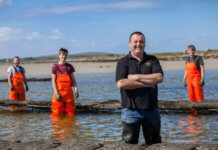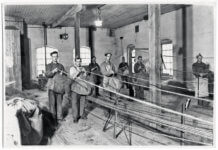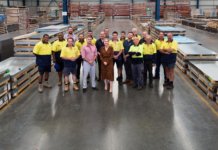With the help of their seven sons, James Frost and his wife Ann have revitalised their centuries-old Portuguese estate vineyard, Quinta de Sant’Ana, transforming it into a premier location for destination weddings.
In doing so, the Frosts have been careful to maintain their property’s singular aesthetic – a product of time and tradition. After all, their history is a romantic selling point: one of the estate’s previous owners, actress Rosa Damasceno, was lover to King Dom Luis who visited frequently.
The extensive refurbishments that have allowed them to run their business, including the renovation of pre-existing structures into guest houses, have prioritised authenticity over cost and convenience. Where possible, the Frosts have extended their transparent methodology to their environment as well, ensuring everything they do, from the wine they make to the flowers they grow, has the smallest possible footprint.
The strategy has paid off. According to Frost, couples book Quinta de Sant’Ana first and foremost because of its untouched beauty – both that of its buildings and its natural surroundings.
We sat down with James Frost to discuss how he maintains this balance while growing the family business, keeping the future and his seven sons in mind without losing sight of tradition.

How did you come to own a Portuguese winery?
Various families have owned the estate since its inception in the 17th century. My wife’s parents purchased it in the 1960s. They lived here permanently until the 1974 revolution when they returned to Germany. When the dust had settled, they came back yearly to spend their summer holidays in Portugal with their seven children. After we had invested a considerable amount of time on both the property and the culture, my father-in-law sold the winery to us in the early 90s.
Our first significant project was renovating some of the existing buildings into guest houses, which have increased in number over the years. We converted an old factory on the premises into a banqueting hall where we primarily host weddings. The five self-catering houses are usually reserved for family and guests of the bride and groom. We also host corporate business luncheons and dinner retreats.
“There exists a growing desire to get away from the complete digital connectivity that defines 21st-century life…Sant’Ana offers a closeness to the natural world that is difficult to find elsewhere.”
What brings your guests?
Though we’ve substantially revitalised the technical aspects of the property, we’ve tried to do it as transparently as possible. The renovations don’t diminish the traditional aesthetic that makes the estate so special. Our guests appreciate the authenticity as well as the peace this affords.
There exists a growing desire to get away from the complete digital connectivity that defines 21st-century life. Increasingly, people want to go somewhere where they can experience a traditional way of living, and Sant’Ana offers a closeness to the natural world that is difficult to find elsewhere.

Our location, just 30 minutes north of Lisbon, plays a significant factor in our success. The estate is nestled in a diverse landscape of beautiful rolling hills and valleys. We rely on our website and photography to sell this aspect to our customers: of the 60 to 80 weddings we host a year, over 90 per cent are foreign couples, most of whom cannot visit the grounds beforehand but rely on our photographs alone to help in their selection of venue.
“…It’s difficult to feel like you’re taking a day off if there are 120 people milling around right outside your window.”
Is running a hospitality business out of your home ever challenging?
Certainly – it’s a personal investment on many different levels, and it can end up feeling claustrophobic at times. Lending our private space as a public gathering place blurs the boundary between work and life: it’s difficult to feel like you’re taking a day off if there are 120 people milling around right outside your window.
That said, having the ability to do what we do is a blessing, and cultivating that balance comes from within. Tending to the farm that I love and working with our animals are both calming and introspective tasks. We are fortunate to have these chores that offer us some seclusion.
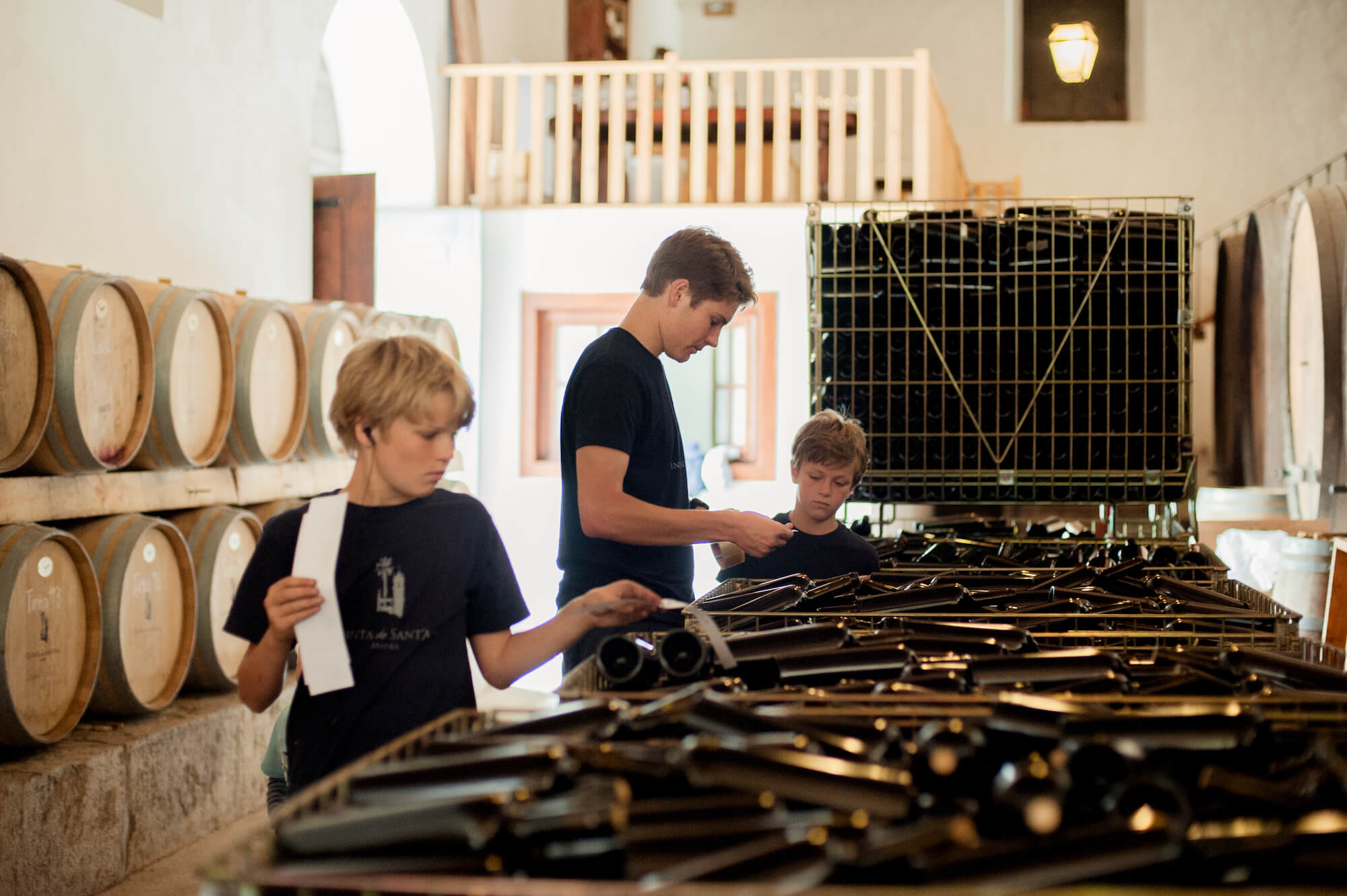
To what extent are your children involved?
Our intention is that our sons will eventually take on more formal roles. They are expected to participate just as I was while growing up on my father’s farm by working with us seasonally. Four of them are currently studying and working abroad but take time off when they are needed to help with the grape harvest.
As parents, we derive a great deal of satisfaction seeing their engagement with the family business. We’d love to see them delving deeper into the business, in whatever capacity their personal lives will allow. As we diversify and expand, they’ll have the opportunity to find roles that are well-suited to their interests and can help us grow, which is an exciting prospect.

How do you stay innovative without losing touch with the traditional aesthetic?
We’re are blessed with an efficient team who are helping us grow our brand and online presence. Twenty-six years ago, we operated with fixed-line phones and a fax machine – to think of how our technology has progressed since then is extraordinary.
We rely heavily on our website for marketing, the ongoing development and maintenance of which we oversee. Our various social media accounts are all handled in-house, which has been adequate to attract bookings from all over the world.
These technologies are a wonderful asset, but in a sense, manually, we’re moving backwards. By focusing on organic viticulture, using natural production methods and dedicating ourselves to an environmentally conscious mentality, we’re limiting ourselves technologically.
That’s not to say that we haven’t made any changes. We’ve always been able to grow an abundance of fruit and vegetables, but the original vineyard didn’t produce a viable harvest to make good wine. So, in 1999, we sold those grapes and planted two and a half hectares of new vineyards. In 2004, we started working with our winemaker, António Maçanita, to produce wines of the best quality exclusively. Now, we have grown our vineyard to a total area of 12 hectares.

This year, we started growing flowers from seed that we cut for events, rather than having to import expensive, pesticide-covered products from overseas.
Not only do our grapes and flowers add charm to the property, but they also embody our commitment to a higher ethical and environmental standard, although there’s still much room for improvement.
Despite the best of intentions, there is a certain amount of waste associated with catering for thousands of people every year. We’d like to continue exploring technology and innovating to achieve an even higher standard of sustainability.
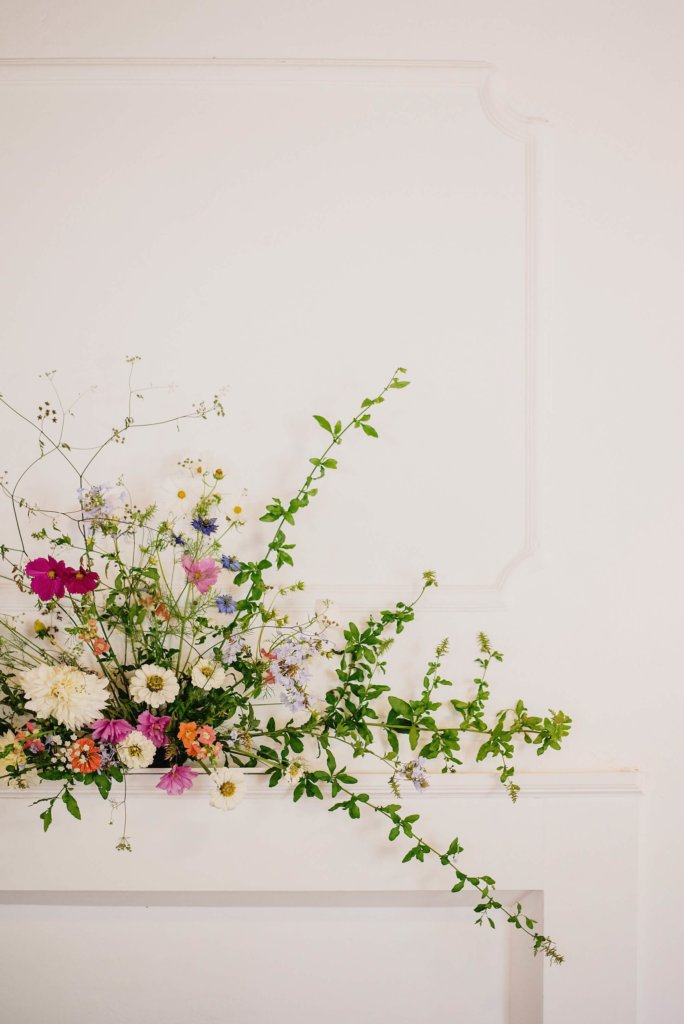
What does the future have in store for Quinta de Sant’Ana?
Our events are currently the most profitable aspect of our business. So, to further capitalise on our strengths, we’re expanding by opening a village restaurant capable of hosting smaller events in town.
Increasing our wine production capacity by 20 per cent is another goal we have in our sights, but it’s one that brings us back to your question about balancing innovation and tradition.
The production of quality wines necessitates strict control and small batches. Presently, our vineyard isn’t equipped for more vines, and to grow to meet this goal, we will require significant expansion in terms of land. However, growing the winery beyond Quinta de Sant’Ana’s traditional location will take serious consideration.
Retaining Sant’Ana’s singular authenticity is central to the success of our brand and the identity of the family business.



